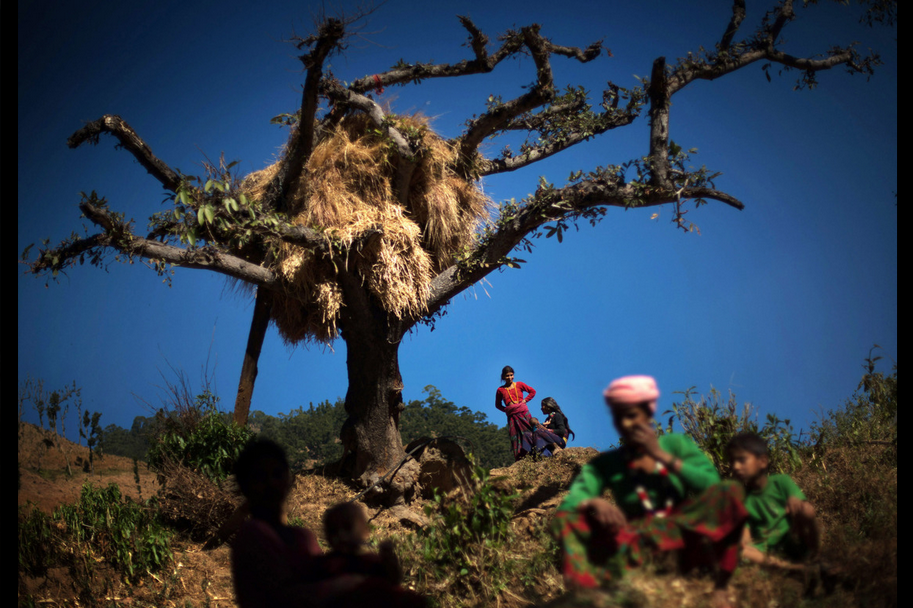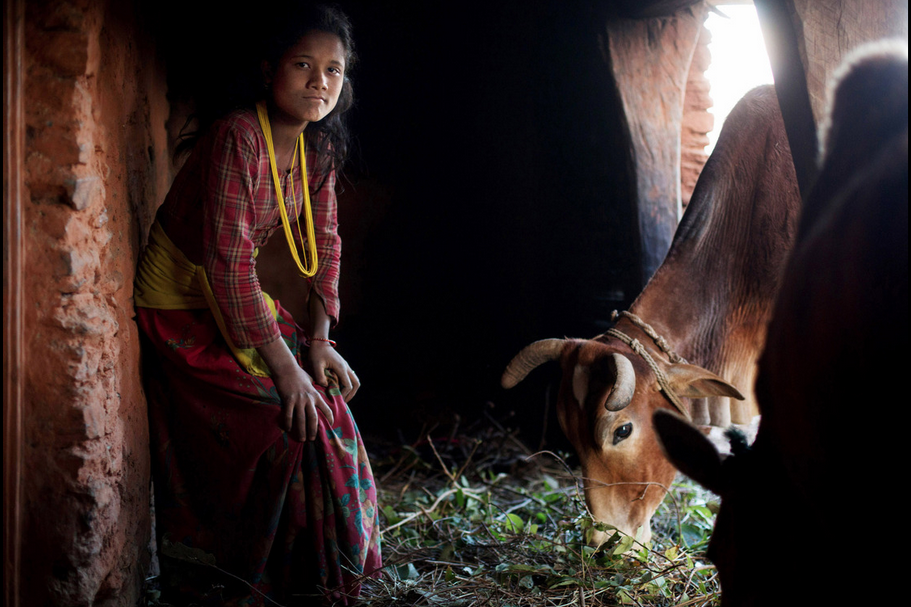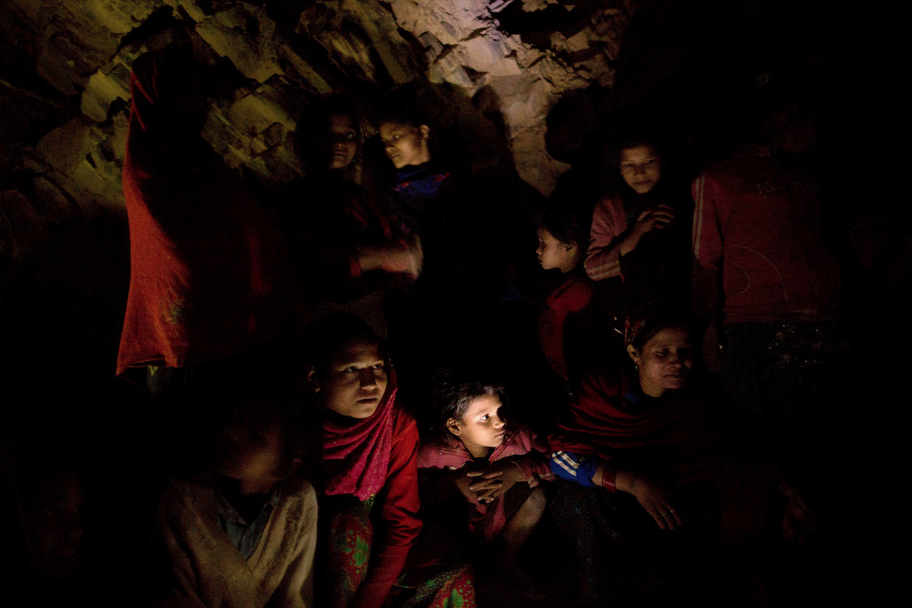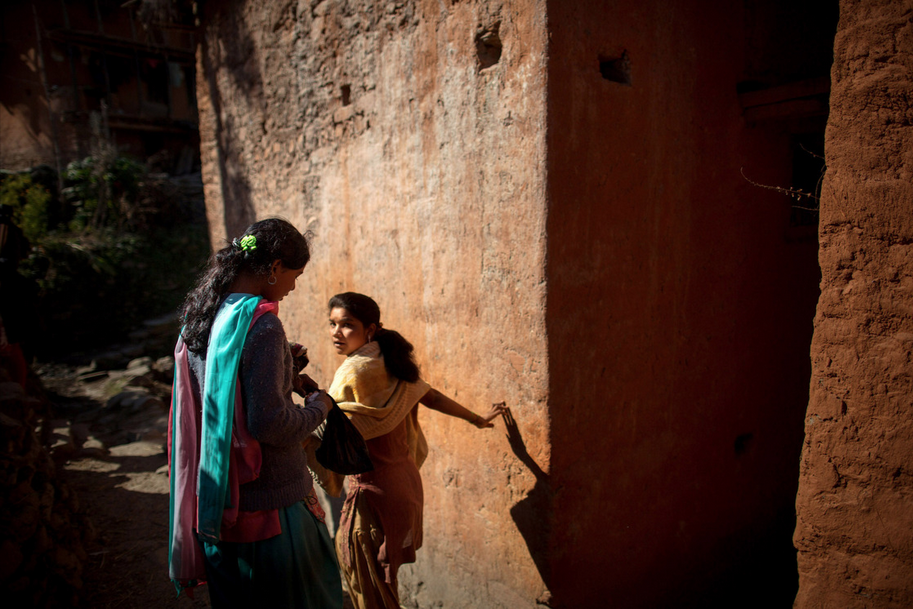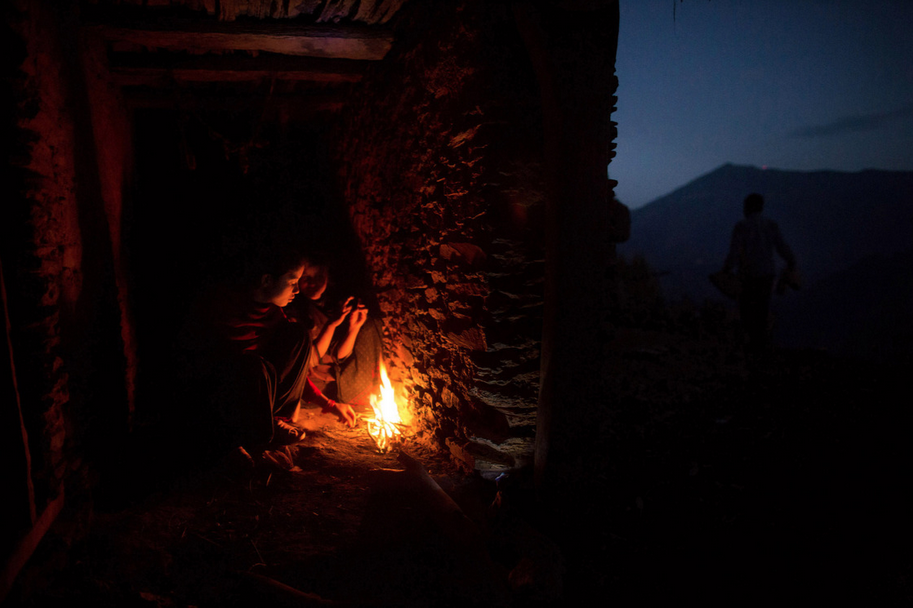Story by Coburn Dukehart, for NPR's The Picture Show
It took a long journey, several 10-hour jeep rides, and many bumpy unpaved roads for photographer Allison Shelley and writer Allyn Gaestel to reach the rural villages in Nepal where women practice chaupadi.
Chaupadi is a traditional Hindu practice that banishes menstruating women — considered unclean — from the rest of the house. According to Shelley and Gaestel, they are not allowed to touch kitchen utensils, share the same water source, go to school, or sleep inside the home during their periods.
Instead, they sleep in huts, animal sheds, caves or even in the open. The crude spaces are often not heated and provide little protection from the elements — or from rape. Despite being outlawed in 2005, social and cultural traditions keep chaupadi alive. Shelley told me that women and children have died from exposure, burning or animal attacks, all while practicing chaupadi.
Shelley says she was shocked when she first learned of chaupadi while researching global women's health issues back in the U.S. But she came to realize it was a much more complex issue than simply ordering women back into their homes.
"We went in with a lot of sympathy for the girls — thinking they were just mute victims of this — but we realized that that's not the way they see themselves," says Shelley, who traveled with Gaestel on a grant from the Pulitizer Center On Crisis Reporting.
They learned that the traditions surrounding chaupadi are deeply ingrained and vary from village to village. Some families don't practice it at all, while others believe the gods will punish them if they stop. Many girls simply accept chaupadi as an unquestionable way of life.
"I think for the most part, it wasn't a stigma, it wasn't a shame — and we kept hearing, 'Well, this is what God wanted. It's God's will,' " Shelley says.
Shelley says she was deeply saddened to meet women who had been raped or had lost family members as a result of chaupadi. One woman's daughter burned to death from a fire she lit to keep warm. Another lost two babies who slept with her at night: one was bitten by a snake; the other was taken by a jackal.
But according to Shelley, when she asked the women who had suffered tragedy if their daughters would also practice chaupadi, they said, "Yes, it's a rite of passage. It's just the way we do it here."



